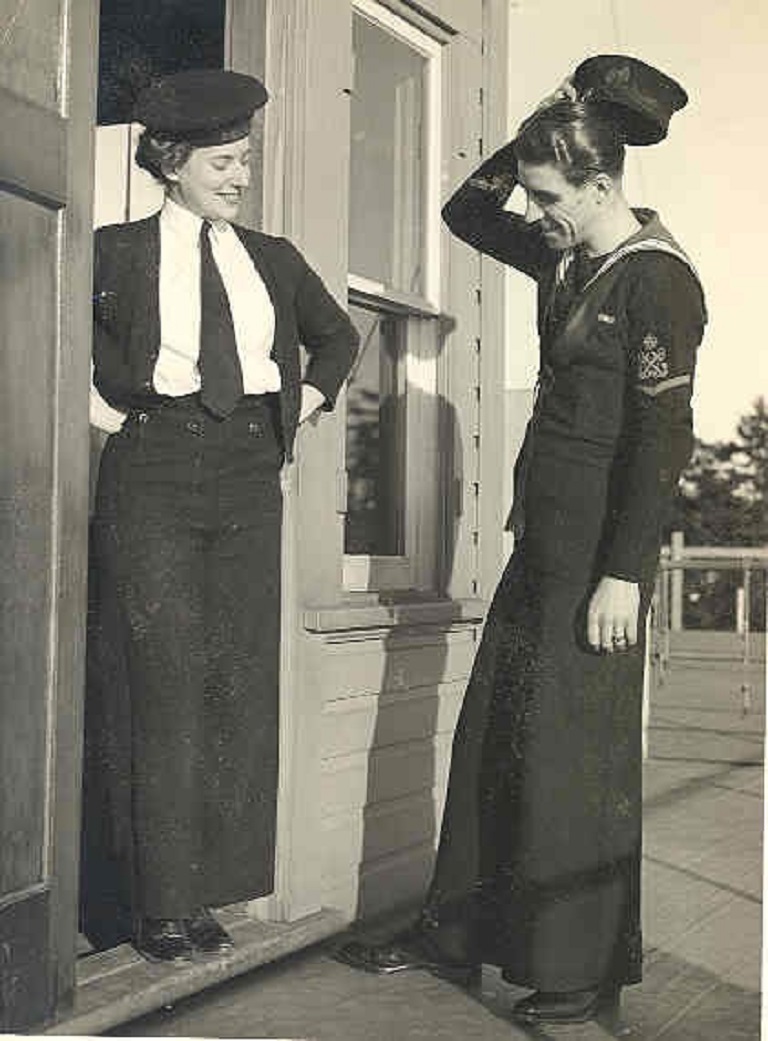100 Years for Canada's Navy
On May 4, 1910, Canada officially launched its own navy. One hundred years later, in 2010, the Canadian Navy Centennial celebrated the rich history and legacy of the navy and offered all Canadians the opportunity to reflect upon the service and sacrifices of the men and women who served, and continue to serve.
In 2010, there was a variety of celebrations across Canada. Some of the highlights included a travelling road show, an essay contest and a cross-country run along the Trans Canada Trail. In addition, most provincial capitals hosted a variety of dinners, balls, and parades. The Royal Canadian Mint and Canada Post also approved a naval centennial silver dollar and two stamp set.
The slogan of the centennial was: Commemorate, Celebrate, Commit. The theme was to “Bring the Navy to Canadians.”
Co-ordinating the year’s worth of events was Captain John Pickford, project manager of the Canadian Naval Centennial. Pickford joined the Canadian Forces as a naval officer in 1974, and was appointed as project manager of the centennial in 2005. Among a lengthy list of credentials, Pickford was appointed to command the destroyer HMCS Athabascan in July of 1990, which he deployed when the Gulf War began.
Timeline

May 4, 1910
Canada’s navy was officially created when the Naval Service Act established the Royal Canadian Navy (RCN).
February 1, 1911
Recruiting posters for the Royal Canadian Naval Services are issued in Post Offices across Canada for the first time.
May 14, 1914
The Royal Naval Canadian Volunteer Reserve (RNCVR) was officially created. Annual costs were estimated at $200,000.00.
June 15, 1920
The RNCVR is disbanded. During the period of its existence, over 6,000 men had joined.
January 15, 1923
The Royal Canadian Naval Reserve (RCNR) was officially created. Initially, there are nine divisions, but are soon reduced to five at Charlottetown, Halifax, Quebec City, Montreal and Vancouver.

August 26, 1939
The RCN took control of all Canadian merchant ships, and no Canadian-registered ship or merchant ship could sail without the RCN’s direction and authority.
June 6, 1944
110 RCN ships and 10,000 Canadian navy personnel took part in the D-Day landings at Juno Beach in Normandy.
May 28, 1945
All Canadian ships at sea turned on their running lights to signal the end of the Battle of the Atlantic at one minute past midnight. It was the longest sea battle in history, and began on Sept. 3, 1939, with the sinking of the S.S. Athenia — a British passenger ship — by a German submarine.
February 25, 1955
Women are for the first time allowed to become part of the permanent force in the Royal Canadian Navy. During the Second World War, women volunteers were able to enlist and serve in “non-combatant” naval bases at home and abroad. Overall, 5,893 women volunteered for naval service during this time.
February 1, 1968
The Canadian Armed Forces are formed from the existing Royal Canadian Navy (RCN), the Canadian Army and the Royal Canadian Air Force. Later, they are renamed the Canadian Forces. The maritime aspect was named Maritime Command (MARCOM). It is commonly referred to as the Canadian Navy today.

June 19, 2003
The Government of Canada designated September 3 as a day to acknowledge the contribution of Navy Veterans. September 3 was chosen to commemorate the sinking of the S.S. Athenia, which was bound for Montreal when it was sunk in 1939. There were 118 people, including 4 Canadians, killed in the attack.
May 4, 2010
The Canadian Navy celebrates its centennial.
Themes associated with this article
Advertisement
You might also like...

Canada’s History Archive, featuring The Beaver, is now available for your browsing and searching pleasure!









